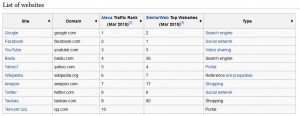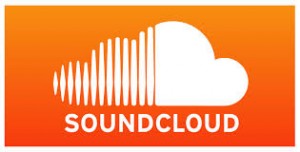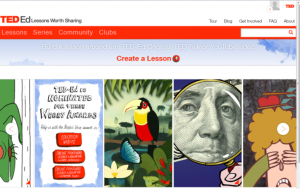Act I
(Setting the scene and background information)
Since L’arrivée d’un train en gare de La Ciotat wrote itself into urban legend by making the audience scream and flee the cinema, so began the a public’s interest in the art of moving pictures. Their impact can be seen and felt throughout society and around the globe. The earliest use of motion pictures in the classroom occurred in America in 1910 (Snelson and Perkins, 2009). Silent films provided educators with a new mechanism for making instruction more concrete, realistic and visual. Through film, students could witness far away lands, visit dangerous places and witness natural phenomena, which is something textbooks were unable to provide to those seated in the classroom.
By the late 1920’s, a new capacity was introduced to film with the arrival of the sound (films known as “talkies”). The element of audio opened up even more pedagogical affordances for the utilisation of film in the classroom. Images and audible language exposure offered a multi-functional input stream that could contextualise language and give examples of authentic use.
Fast-forward several decades, and movie theatres and projectors were being replaced by video recording technology. This innovation extended the capacity for the professional and amateur recording of materials. Video recording and cassettes provided opportunities for more mobile input and gave greater control of editing and playback options. It became possible to escape the constraints of broadcast schedules that did not correspond to classroom schedules. In addition to this, the process of recording videotape footage of sporting events, science experiments, or local history could be easily accomplished with portable video cameras. This pathed the way for new possibilities for assessment and student-centred creation of materials (Snelson and Perkins, 2009).
The emergence of commercial videodisc players began in the late 1970s and early 80s. They introduced more advanced levels of access to material in the classroom. In addition to these more advanced features, DvDs (as we know them) gave not only greater control, but also the capacity to store text, charts, graphs and audio in addition to video. With a videodisc it was possible to jump directly to video segments without having to rewind, search, and play as was necessary with videotape (Snelson and Perkins, 2009). DvDs gave an efficiency to video input that earlier display options could not provide.
The arrival of the computer, mobile devices and the internet have been the most significant evolution of video and its use in education. In fact, media players that enable video playback on computers have existed since the early 1990s. However, video streams from online services allow users to view media instantly through the internet rather than waiting for a lengthy download or needing a disc (Snelson and Perkins, 2009). This development has meant that video input in education has gone viral (and the term “viral” has become part of everyday lexicon). Using streamed video as part of ELT materials is convenient and pedagogically advantageous. This has seen a massive increase in Massive Open Online Courses (MOOCs). It is redefining how, when and where we teach and learn.
Act II
(The current landscape)
Online video has permeated the internet and has become an incredibly popular media among its users. Teachers with access to interactive whiteboards or any device that is capable of playing streamed video will no-doubt be visiting YouTube or Vimeo for free-at-the-point-of-use materials. There has been a meteoric rise in online video content, and YouTube is ranked the third most popular website in the world (Wikipedia, 2015).

The wealth of available material online has drawn attention from institutions and businesses alike. For example, YouTube EDU was established in March 2009 with leading colleges and universities contributing to it as a means of creating online courses and educational content of a professional standard. At the same time, many leading publishing companies are moving their focus to more open online courses and e-publication of material.
The use of online video has not only empowered teachers, but technology has also put the student in an advantageous, autonomous position whereby they can create their own content. Some of the most significant changes are the options for video capture, editing and delivery. It has given rise to new approaches of language production and reception, such as the popularity of video-based storytelling. This has been enabled largely by innovations in video production and distribution (Robert Godwin Jones, 2012). Another shift has been the greater array of capturing options: inexpensive camcorders, built-in webcams and mobile phones. The quality of the recording devices has much improved over the years. The most intriguing new capacity for mobile-produced video is not only its quality, but also its distribution capabilities through instant connection to the Internet.
The global reach is not enough, it is the multimodality offered by online video that empowers language-learning on a greater level. The HTML ‘embedded’ code, provided with YouTube and other services, can be pasted into online discussion board posts for students analyse and respond to. Students may record video responses, link web pages, or create something and share through any medium they choose. This adds a new dimension to discussion boards and general correspondence whereby students can see and hear each other rather than simply read text responses.
Act III
(The final debate/battle)
One of the salient benefits for moving pictures in the classroom is the capacity to preserve real-world events, depict motion and change the speed of recorded phenomena. This gives instant, contextualised input and opportunities for examples of authentic language use. Video moves beyond the page of any textbook and brings events to life (authentic or re-enactment). It is this capacity that can engage and motivate students at all levels. In modern-day classrooms video input is almost expected.
The use of visual and audible input means that students have a greater range of semiotics to which to attach meaning and from which to glean understanding.The ability to navigate directly to short, focused video segments like those commonly found on YouTube enables the visual and auditory attributes of video to be exploited without losing student attention during a long-playing presentation. In contrast, there could be information overload and it may add to confusion or misunderstanding. The issue of appropriacy is a key consideration; the internet has every subject imaginable and teachers need to check before use or be be prepared when trying out ‘off the cuff’ video.
Instant, global distribution means that students can be exposed to both native speaker and non-native speaker language-use. This tallies with the idea that classrooms should not be Anglo-centric and can help students with English as a lingua franca which may be their context. A variety of input and output experiences may also benefit monolingual classes.
It is the huge scale of video resources that has made online videos so adaptable and appealing. There is probably the right video input that you need online, it is just a question of finding it. If it can not be found, there is little to stop a teacher from creating it themselves. With so many input options, video is used with all types of materials. Materials-as-content can use video to elicit discussion and debate about a topic, while materials-as-language can be used for activities such as listening gap-fills, summary writing, and language noticing activities. The same clip could be used for a myriad of different lessons and learner levels which add to its economy.
Portability, low cost, and widespread access have promoted mobile phones to a high level of importance among learning technologies. Video recording and sharing lend themselves very well to this technology. They give autonomy to the student to actively or passively engage with video inside and outside the classroom so that they are being exposed to the target language.
Zhang, Zhou, Briggs, and Nunamker (2006) conducted an empirical study that showed interactive video groups achieved both significantly higher learning gains and higher levels of satisfaction than the other three groups. This group also had random access to video content whereby they could select and jump from video clips of interest. This has similarities with the array of online video services available today.
Doubting Voices
Snelson and Perkins (2009) highlighted that as early as 1922 the pedagogical benefits attributed to educational film were based on unproven and unscientific psychological principles. Castro used phrases such as “doomed” and “swift disillusionment”, while warning against blindly accepting promises about the use of film that it is not capable of fulfilling.
Ormer (as cited in Snelson and Perkins, 2009) explained “the effectiveness of films depends on how well their content is related to a specific instructional objective. There is nothing in a motion picture presentation, per se, that guarantees better learning”.
Clark (1983) (as cited in Snelson and Perkins, 2009) wrote “the best current evidence is that media are mere vehicles that deliver instruction but do not influence student achievement any more than the truck that delivers our groceries causes changes in nutrition”
Access and sharing capabilities also open the teacher and the student to copyright infringements and inappropriacy of the content. In spite of there being filters and blockers teachers can use, that fact the internet offers instant continual access to millions of hours of free video content is likely to throw up some unpleasant surprises.
A discussion about video needs to strip away the surrounding affordances that are mere add-ons. The key issue is whether using video in an ELT context satisfies the needs of the students and the task at hand. There is no escaping the potential that video has for engaging and motivating students, while offering comprehensible and contextualised input. Whether this means that learning and the acquisition of language will be improved is unclear. It is powerful part of the teaching arsenal and a great way to empower students to create their own content.
References
Bailey, R. & Dugard, C. (2007) Lights, camera, action!: Digital video in the languages classroom. London: CiLT.
Godwin Jones, R. (2012) Digital video Revisted: storytelling, conferencing and Remixing. Language Learning & technology 16 (1): pp 1-9. Available from http://llt.msu.edu/issues/february2012/emerging.pdf (accessed 2 April 2015)
Snelson, C. & Perkins, R. A. (2009) From silent film to YouTube[TM]: tracing the historical roots of motion picture technologies in education. Journal of Visual Literacy, 28 (1), 1.







what is focused and unfocused task based language learning
Hi
Well unfocused ould be more in line with TBLT (Task Based Language Teaching). This is where the task would be used as a means of the language being promoted and produced through the practise of doing the task with others. Perhaps give the students a project and while they work together on it the need for lexis and functions should come to the forefront. The focused materials would be the more structured and scaffolded apporach to teaching such as the ones found within a coursebook e.g. individual short exercises for skills and language functions. However, the focused materials could be completed as a means of building upon to a task, so not technically TBL in its truest form. I find it effective though.
Thanks for the question